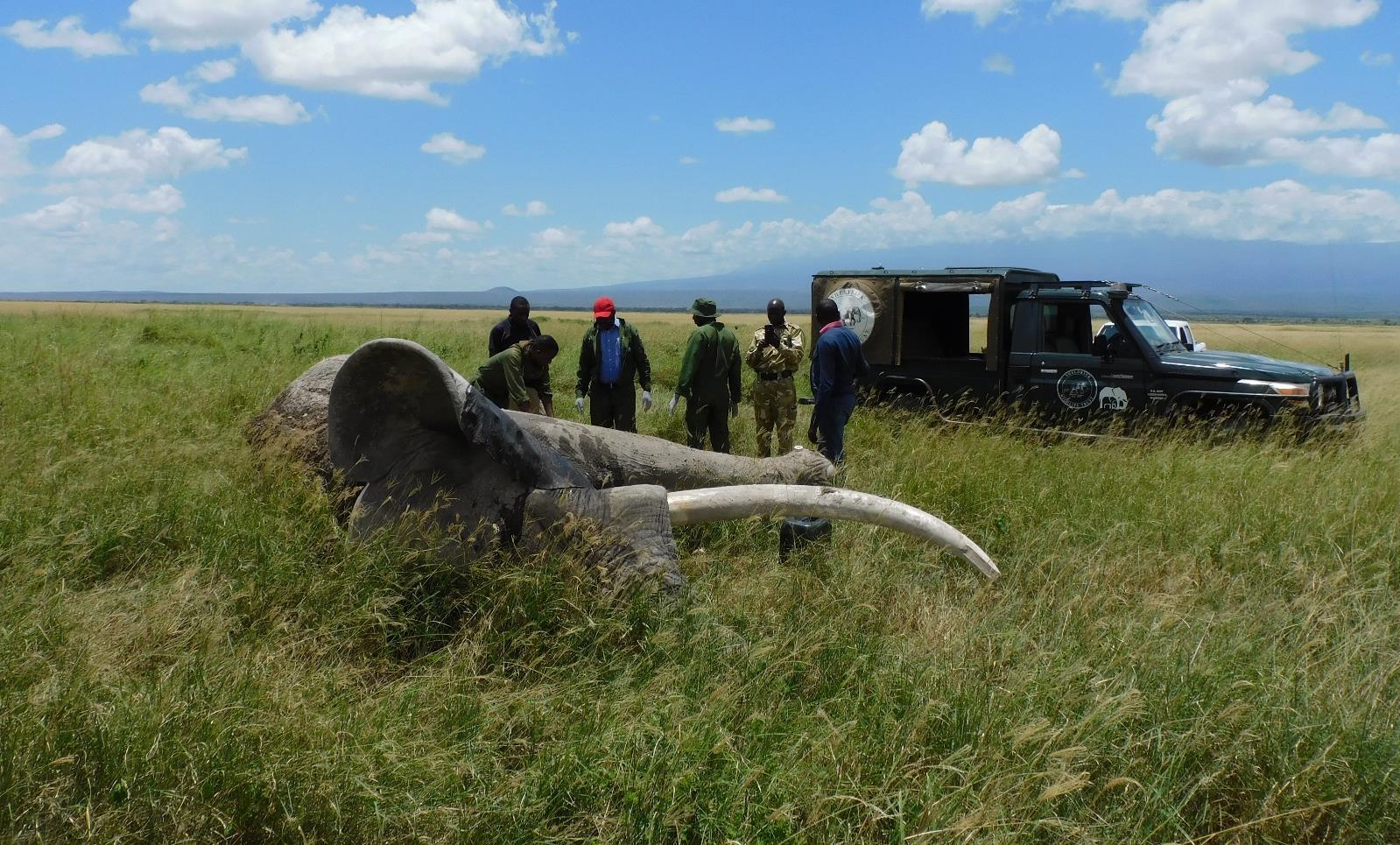
MARCH 2024




4 Cases in March 1 Poaching Case
March Report by Dr.
Kariuki Edward
Elephant Cases
The Southern Conservation Area experienced warm weather in March 2024. The SWT/KWS Amboseli Mobile Veterinary Unit attended to 4 cases, all involving elephants. 2 adult elephant bulls were treated in Amboseli National Park for severe injuries incurred during territorial fights. Tragically, one of the bulls had a fractured left hind limb and died a week after treatment. The other bull was successfully treated and has a good prognosis for recovery. The team also successfully treated an adult elephant bull with a spear wound on the left hind limb in Amboseli National Park. Towards the end of the month, the team attended to an adult elephant bull with a fabric strap snare around its neck and trunk. The deeply embedded snare had inflicted severe injuries on the elephant’s trunk. However, the animal was successfully treated with a good prognosis for recovery indicated.
Acknowledgement
The Amboseli Mobile Veterinary Unit greatly appreciates the support and funding it continues to receive from the Sheldrick Wildlife Trust. The team also appreciates all the staff and rangers from Kenya Wildlife Service in Amboseli, the Amboseli Problem Animal Management Unit (PAMU), Big Life Foundation (BLF), scientists from the Amboseli Elephant Trust, Captain Mazembe from Tanzania National Parks (TANAPA), and everyone else who supported the monitoring of distressed wildlife in areas of interest but may not have been mentioned.
Case Details
March 2024


Elephant Spear
Amboseli National Park
Big Life Foundation (BLF) rangers reported sighting an injured adult elephant bull that displayed signs of lameness. The Amboseli Mobile Veterinary Unit attended to the wounded bull in the early afternoon hours on 04th March 2024.
Immobilisation, examination and treatment
The elephant bull was found alone, it showed signs of pain and lameness. Immobilization was achieved 10 minutes after darting the elephant with 20 mg Etorphine HCl.
The bull had a wound on the left hind leg and on the knee joint. The deep wounds oozed pus and blood. Pus was drained from the wounds then they were irrigated with Hydrogen peroxide and Iodine solution. An Amoxicillin injection was administered and Oxytetracycline spray applied topically to cover for bacterial infection. The bull was successfully revived with Naltrexone post-treatment
Prognosis
The elephant bull has a good prognosis.




Elephant Natural Causes
Amboseli National Park
KWS rangers on park patrol reported coming across an injured elephant bull. The bull displayed lameness and it had been abandoned by its bachelor herd.
Immobilisation, examination and treatment
The veterinary team found the bull in an unnatural posture which indicated that it was in pain. The animal was easily darted due to its limited mobility and successful immobilization was achieved with 20 mg Etorphine HCl.
Upon examination, a fracture of the left hind limb was observed It was suspected that the bull suffered the fracture during a fight with another bull. Amoxicillin antibiotics were administered and Oxytetracycline spray applied to cover for bacterial infection. A Flunixin injection was also administered to cover for pain and inflammatory reactions. The bull was revived with Naltrexone and woke up after drug administration
Prognosis
The elephant bull had a poor prognosis. Sadly, it passed away a week after treatment.




Elephant Natural Causes
Kitirua, Amboseli National Park
The elephant research team in Amboseli National Park reported seeing an injured adult elephant bull. The bull had a history of moving across the Kenya – Tanzania border with several elephant bulls that had been killed in Tanzania. It was deemed necessary to collar him in a bid to save him and facilitate monitoring of other herds transversing the border.
Immobilisation, examination and treatment
Immobilization was achieved with 20 mg Etorphine HCl. It took 10 minutes for the drugs to take effect. Upon examination, the elephant bull was found to have severe wounds inflicted during territorial fights. It was suspected that bull was involved in a fight with the elephant bull treated on 06th March 2024 (Case 2). Some of the deep wounds on the animal were bleeding due to the traumatic injuries inflicted. The wounds were irrigated with Hydrogen peroxide and Iodine solution then Amoxicillin was administered intramuscularly and Oxytetracycline spray applied topically. The bull was collared to assist in monitoring elephant movement across the Kenya -Tanzania border. The elephant bull was successfully revived with Naltrexone.
Prognosis
The elephant bull has a good prognosis.




Elephant Snared Tsavo East National Park
Sheldrick Wildlife Trust (SWT) management informed the Amboseli Mobile Veterinary Unit of a snared elephant bull in Tsavo East National Park. The Veterinary team was airlifted from Amboseli to the treatment site by SWT aircraft.
Immobilisation, examination and treatment
The snared elephant was found in a family of 3 elephants. A fabric strap snare could be seen around its neck and trunk. The snared elephant was separated from the family group to facilitate treatment. It was successfully darted from a helicopter and immobilized with 18 mg Etorphine HCl. The helicopter assisted in keeping the elephant from venturing into the bush before the drugs took effect 10 minutes later. Upon examination, a severe wound inflicted by the embedded fabric snare was observed on the elephant’s trunk The deep wounds were oozing pus and blood. The wounds were cleaned and irrigated with Hydrogen peroxide and Iodine solution Amoxicillin was administered intramuscularly and Oxytetracycline spray applied on the wound to cover for bacterial infection. The bull was successfully revived with Naltrexone posttreatment.
Prognosis
The elephant bull has a good prognosis




